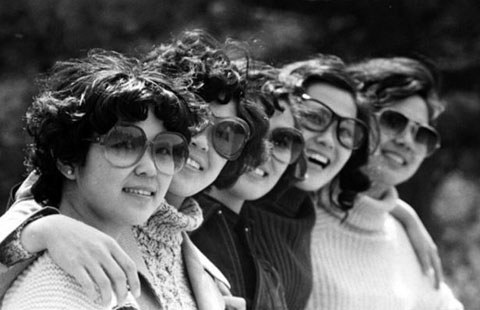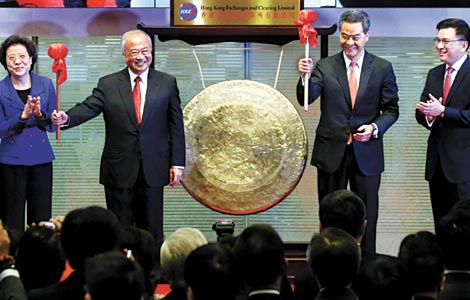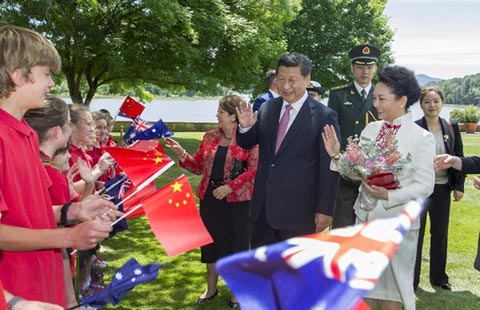Mayan exhibition shows 'similarities' with Chinese
Updated: 2014-11-18 07:33
By Wang Kaihao(China Daily)
|
||||||||
A mysterious atmosphere builds up inside an exhibition hall as Chinese visitors look at the artifacts from the ancient Mayan civilization from several centuries ago and at a place more than 10,000 kilometers from China.
A few visitors might even know something about the Mayas and their culture, especially their doomsday prophecy - about the end of the world - through the movie 2012. But the Chinese visitors view an entirely new world at the display.
The National Museum of China in Beijing opened one of the country's biggest exhibitions of cultural relics of Latin America, Mayas: The Language of Beauty (Mayas: El lenguaje de la belleza), on Friday. President Xi Jinping and Mexican president Enrique Pena Nieto cut the ribbon for the exhibition the previous day.
The exhibition displays 238 cultural relics from 20-odd institutions in Mexico. It is the museum's first cooperation with that country, according to Huang Zhenchun, deputy director of the museum.
Major items at the current exhibition include pottery sculptures, burial objects and stelae. Some of the treasures had even never been taken out of Mexico before, the official says.
"Chinese usually know Mayans as famous for their astronomy, math and calendar but do not know much about their other endeavours," says Tong Chunyan, the Chinese curator of the exhibition. "Our focus is to present individual Mayans' views of themselves, their aesthetics and their connection with society and nature.
"The show opens up a new horizon for visitors, and we hope to stage similar events in the future."
The displays are divided into four sections: the Body as a Canvas (about decoration); the Clothed Body (about attire); the Animal Alter Ego (about the relationship with nature); and the Bodies of the Divine (about worship and beliefs).
They provide a detailed introduction to the civilization that lasted from around the 18th century BC to the 16th century AD. Today's Mexico is still home to 6 million descendants of the Mayas.
"It's interesting to find some similarities in details between Mayan and ancient Chinese civilizations," says exhibition curator Jose Enrique Ortiz Lanz from the National Institute of Anthropology and History of Mexico.
For example, the Mayas adored jade, which was unique in the Americas but was similar to ancient China, he points out.
"Jade masks covered dead bodies of the Mayas. And we see remains of nobles with jade costumes in ancient Chinese tombs."
The displays also reveal the Mayas' worship of social harmony and high respect for the elderly, which coincided with Confucian teachings. One exhibit shows the Mayan moon goddess Ixchel with a rabbit, which may remind the Chinese visitor of Chang'e, the moon goddess in Chinese mythology who is accompanied by a rabbit.
"There are some academic studies in Mexico that look for explanation of possible common or close origins of Mayan and Chinese civilizations, but we need more cooperation in archaeology between the two countries," Ortiz says.
One theory has it that the ancestors of the Mayans migrated to the American continent from East Asia across the Bering Strait.
"But even if we find evidences of common origins, China could be only one of the sources, since the Mayan civilization appears to have been very diverse," he adds. "It's amazing to see different civilizations develop in parallel, with similar elements.
"As long as we endeavor to preserve our respective traditions and try to know each other's better, the world will be more colorful."
wangkaihao@chinadaily.com.cn
(China Daily 11/18/2014 page19)

 China then and now through a lens
China then and now through a lens
 Stock Connect provides new opportunities
Stock Connect provides new opportunities
 India-China joint counterterrorism training exercise in Pune
India-China joint counterterrorism training exercise in Pune
 Crazy climbers take death-defying selfies
Crazy climbers take death-defying selfies
 China International Pet Show opens in Beijing
China International Pet Show opens in Beijing
 Top 10 Internet companies by market value
Top 10 Internet companies by market value
 Open Doors report finds increases in intl enrollment
Open Doors report finds increases in intl enrollment
 Xi attends welcoming ceremony by Australian Governor-General Cosgrove
Xi attends welcoming ceremony by Australian Governor-General Cosgrove
Most Viewed
Editor's Picks

|

|

|

|

|

|
Today's Top News
China then and now through a lens
China sends record number to study in US
Chinese firms starting to think outside the box
Apple taps UnionPay for China link
Stock Connect provides new opportunities
Deal set to boost food cooperation
China once again boasts world's fastest supercomputer
Life sentence in Chinese students' slayings
US Weekly

|

|







